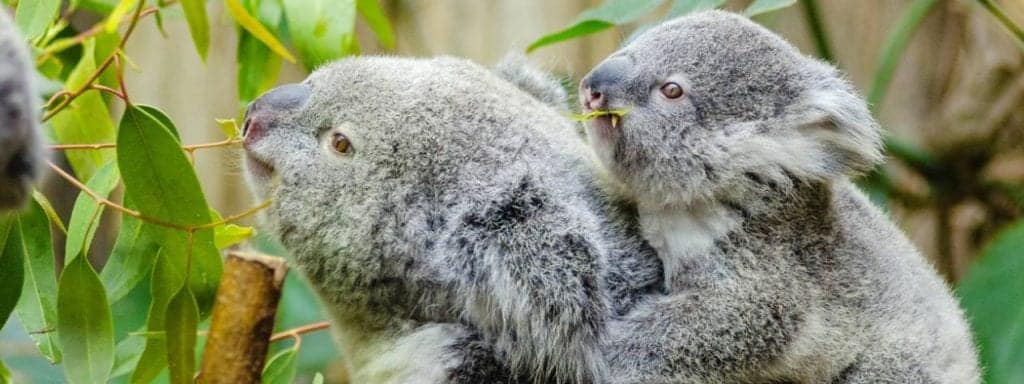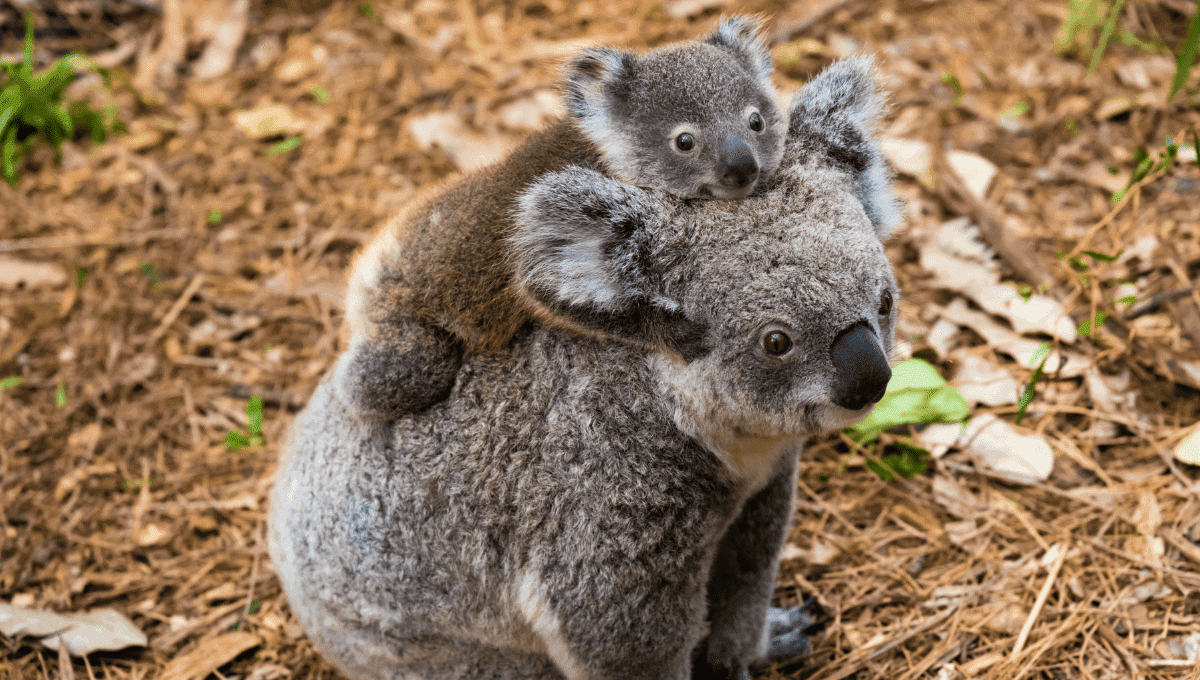In this article you will find all the koala facts for kids that you need to help you with your school project so you can learn about these beautiful animals.
Looking for information and koalas facts for kids? Australia is famous for a number of animals that can only be found in these lands and Koalas are one of those.
Koala bear facts for kids – they look like real life teddy bears but there is a lot more to these cuddly koalas. We have put together some interesting facts about koalas for kids. So, if you are talking about Australian animals in school, or trying to find facts about koalas for kids for a fun project, this is a good place to start.
This article will give you koala facts for kids to help you with your school project, assignment or homework.
Facts about koalas for kids

Some basic information about koalas for kids:
They are marsupials:
We regularly refer to koalas as ‘koala bears’ however they are not bears. They are marsupials. So, they fit into the same animal group as kangaroos and wallabies. This means, similar to kangaroo, baby koalas once born develop further in the pouch of the mother.
The mother’s pouch:
The baby koala will stay in mum’s pouch for approximately 6 to 7 months drinking milk. It will then move onto gum leaves. The baby koala is a ‘joey’. Before leaving mum’s pouch, it will feed on mum’s droppings. Mum provides a substance called ‘pap’ from her droppings that the joey needs to survive. This substance helps the joey digest gum leaves.
Young koalas:
Even after moving out of the pouch, the joey is still not ready to be independent. It will live on mum’s back/tummy and you can often see them clinging to mum in this way. This stage will last from 1-3 years. Female joeys are fully grown at 2 years of age, while males not until 3-4 years of age.
Life of a koala:
Koalas can live between 10-15 years of age. When born a koala is only 2cm long. Mum only has one baby (joey) at a time and usually once a year. When born, they do not have sight, hearing or fur however they are born with the sense of touch and smell. Koalas are ‘nocturnal’. This means that they are more active during the night-time and sleep during the day.
If you would like some koala stickers to embellish your project, click here.
Koala habitats

The habitat of a species, is the environment they live in. Koalas live in trees and feed on the leaves of eucalyptus trees which are found in forests and woodlands within Australia. They reside in four states including New South Wales, Queensland, South Australia and Victoria. Koalas have preferred trees known as ‘home trees’. These series of trees are only inhabited by a particular family of koalas.
Will koalas become extinct

The International Union for the Conservation of Nature (IUCN), lists threatened species of animals and plants. This means that they raise the profile of animals that are in danger of becoming extinct (no longer living). Koala, in recent years, have featured on this list classified as ‘vulnerable’.
The Endangered Animals list within the ICUN, has 7 categories ranging from least concern (not currently worried about them) to critical (meaning that there is a real possibility they will become extinct). By raising the profile of a species via their ‘red list’, it provides advice and research to ongoing local projects to help protect the habitat and animal to help them survive.
Natural disasters have also affected koala numbers. In recent years, Australia has suffered droughts and dangerous bushfires. Both have caused issues for local wildlife in these areas. Koalas spend most of their time within the eucalypt trees but will venture down when needing a drink. Due to droughts and fires, it has become incredibly difficult for them to locate any water.
Other factors that are affecting koala’s diminishing numbers is a disease called Chlamydia. This is an organism that lives within many koalas and doesn’t normally cause any issues. However, the disease is thought to be a problem when koalas become stressed. It can pass from mum to baby and from koala to koala. It causes a number of problems including blindness, urinary tract infections, pneumonia and in a lot of cases, death.
Australian koala facts for kids
Koalas diet consists of eucalypt leaves. These leaves are toxic to most mammals. The nutritional quality of these leaves is extremely poor so in order for koalas to get enough ‘goodness’ from them, they need to eat A LOT of them.
The CO2 gases that pollute the air quality produced by industrial companies (factories, etc) has affected gum leaves’ quality which has taken its toll on the koala population. This, together with the clearing of forests and woodlands, means that the areas koalas usually reside are fewer in number, so they have less places to live.
Check out these gorgeous plush koalas here.
Food facts about koalas in Australia

As mentioned, eucalyptus leaves are the staple dietary food for koalas. There are approximately 700 different varieties of eucalyptus trees in Australia so finding these trees shouldn’t be a problem, right? Well, koalas are also spectacularly fussy eaters. From the 700 different varieties, koalas will only feed on about 40-50 different types.
They have incredible noses and their great sense of smell will determine which varieties they need to stay away from (poisonous). The great thing about eucalypt leaves is that this also provides them with the water they need. Only occasionally do koalas go in search of water. They will the descend the tree and wander looking for additional water. Any excess eucalypt leaves can be stored in the cheek pouch of a koala.
Fun facts about koalas
- Similar to human beings, koalas have fingerprints!
- Koalas have a part of the gut known as the ‘caecum’, something else we humans have! The caecum breaks down substances in the stomach to make them easier to absorb and digest.
- Joeys are born just 35 days after mating.
- Koalas can sleep for up to 18 hours per day!
- Koalas have sharp claws which helps them climb up trees.
- An adult koala can eat between half a kilo to one kilo of eucalypt leaves per day!
- It has been reported that as at 2021, there are only approximately 32,065 to 57,920 koalas left in the wild according to the Australian Koala Foundation.
- The scientific name for koala is ‘Phascolarctos cinereus’ which means ‘no drink’ (an old Aboriginal name).
- A male koala is a ‘buck’, the female called a ‘doe’.
How can we help koalas?
The fun koala facts for kids are a great way to learn about these beautiful creatures. Quite clearly they are in need of help to survive. So, what can we do? Learning and respecting these creatures from random facts about koalas to discussing these at school is one way. If you wish to be more hands on, there are organisations that provide a way to donate much needed funds for projects such as WWF-Australia and Koalas for Kids – Australian Koala Foundation.
If you are wanting more facts for kids about koalas, why not visit your local wildlife venue or zoo to find out more. Check if there are any ongoing local projects, particularly those affected by drought or bushfires. These projects could be from fundraisers, to adopting koalas (where you receive a fun pack in thanks for your donation).
If you would like to learn even more about koalas, check out this range of koala books for kids.
More facts for kids to help with school projects
If you are looking for more great facts for kids to help with projects, check out our articles:

